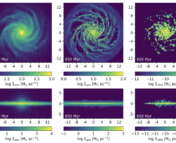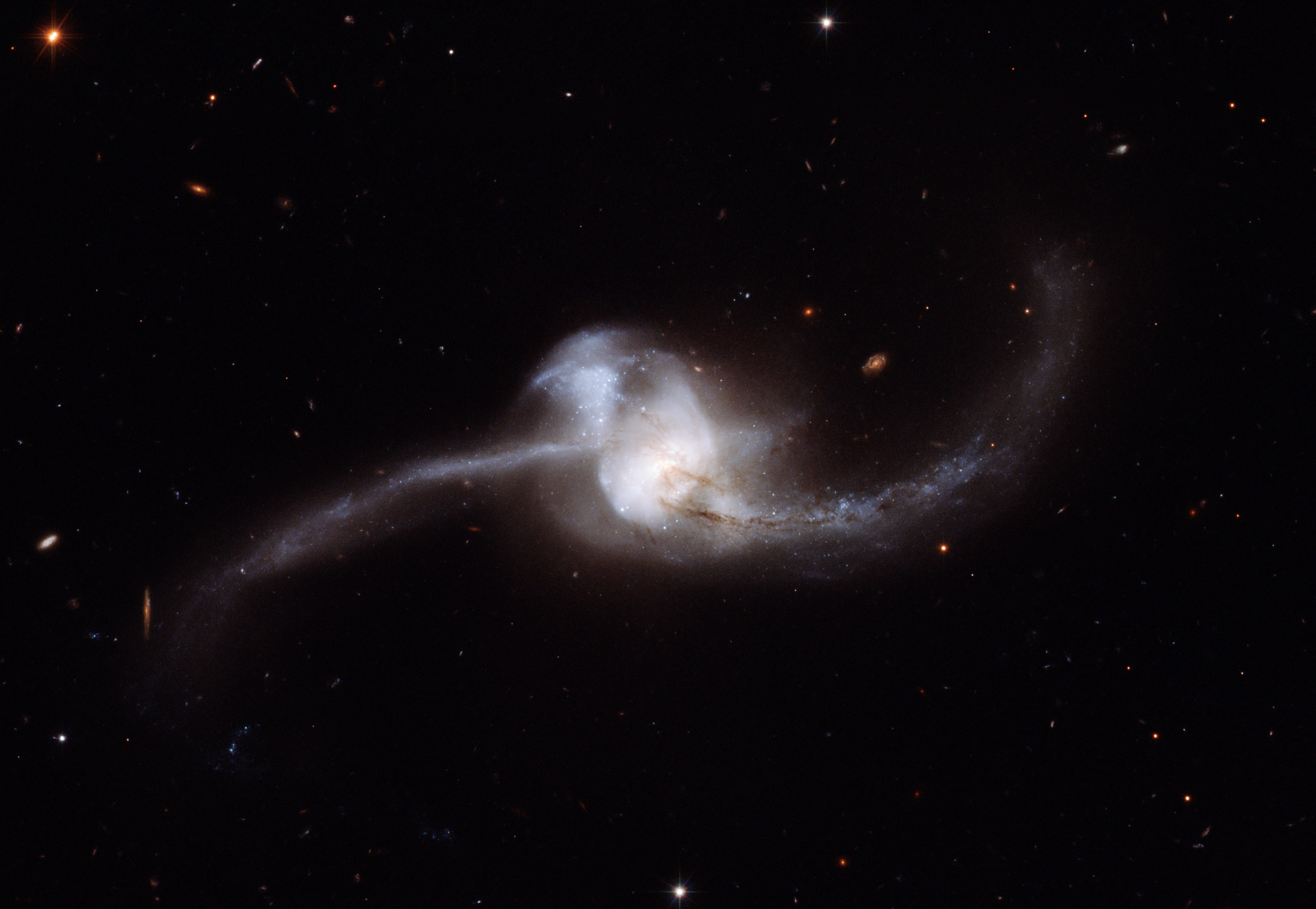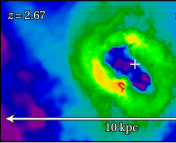Authors: Benjamin W. Keller and J. M. Diederik Kruijssen
First Author’s Institution: Astronomisches Rechen-Institut, Zentrum für Astronomie der Universität Heidelberg
Status: Submitted to MNRAS, open access on Arxiv
Supernovae are some of the most brilliant events in astronomy. Capable of rivaling the luminosity of their entire host galaxy (the galaxy in which the supernova explodes), these explosions release huge amounts of energy back into the universe. The energy released by countless supernova explosions can have a huge impact on the evolution of the host galaxy. Modern simulations of galaxies, therefore, spend a lot of computational time trying to effectively model these events. However, there is still significant uncertainty surrounding many of the details of supernovae. Today’s paper looks at how these uncertainties can propagate to yield major uncertainties in the results of galaxy simulations.
How are stars modeled in galaxy simulations?
Large galaxy simulations need to cover an enormous range of scales which means simplifications/assumptions have to be made about the behavior of some objects. For example, these simulations may represent a cluster of stars as a single particle. This particle will keep track of the properties of the stars that are stored in it, but it will move through the simulation as a single unit. This is analogous to an airplane traveling through the atmosphere. While the airplane will move as a single unit, there are many passengers within that all have different characteristics.
Consequently, one must make many choices about how best to model individual supernovae while being contained in a single star particle. The authors of today’s paper choose to focus on three of these choices: the timeframe for injecting supernova energy back into the interstellar medium, when to start injecting the energy, and the minimum mass of a star that can explode as a supernova.
Instantaneous Delayed Energy Ejection
Once you form a star particle, the first supernova from stars in the particle will occur roughly 1 million years later in the simulation. Other stars in the particle will then continue exploding until roughly 30-40 million years have elapsed. Simulators must then decide how to account for all of this energy in their computations, given that any choice that requires more detail will also require more computational time. Due to these constraints, one of the most common methods is to eject all of the energy that will be produced by all of the supernovae in the star particle at the same time. In other words, since 30-40 million years is short on the timescale of a galaxy, one might assume that all of the supernovae in a star particle go off at once.
This is common in large, cosmological simulations. One must then choose how long to delay detonation of the supernovae after the star particle forms. The authors run six simulations with different delay times: 0 Myr (as soon as the star particle forms; 1 Myr = 1 million years) up to 30 Myr (when the last supernova would be predicted to explode). See Figure 1 for the results.
Changing the delay time can clearly have a large effect on the resulting galaxy! While delay times from 0 Myr to 5 Myr produce relatively consistent galaxies, we can see drastic changes to the galaxy’s morphology with delay times of 10 Myr or more.
Continuous Energy Ejection
On the other hand, modern simulations of galaxies with higher resolution may allow the supernovae to go off independently over the 30-40 million year period. In other words, energy will be ejected continuously over that period. Figure 2 compares the two energy injection schemes: instantaneous vs. continuous. From this plot, one can observe that instantaneous ejection (dotted lines) yields a consistently higher star formation rate than continuous ejection. This is because a continuous ejection of energy will keep preventing gas from collapsing to form stars, while an instantaneous ejection of energy early on won’t be able to halt such collapse over time.
Minimum Initial Progenitor Mass
The final parameter that the authors study is the minimum initial mass of the progenitor — the star that will explode as a supernova. It is still uncertain what minimum stellar mass is needed to form a supernova, so the authors consider a range of possibilities from 6 to 10 solar masses. They find that changing the minimum mass can also have a large effect on the star formation rate of the whole galaxy, as shown in Figure 3. A lower minimum mass limit will allow more supernovae to go off, preventing gas from collapsing to form stars and resulting in a lower star formation rate. Conversely, setting a higher minimum mass limit will result in fewer supernovae and more star formation.
Simulations can get very complex trying to account for all of the physics that goes into forming galaxies. Today’s paper has highlighted the fact that uncertainties in the input models can have a major impact on the results of such a simulation. Theorists and observers will need to work together to test a range of stellar parameters so that we can eventually converge on the best representation of these enigmatic explosions.




